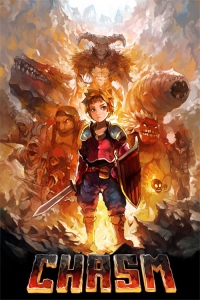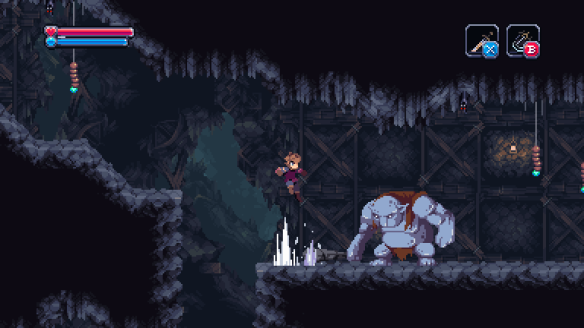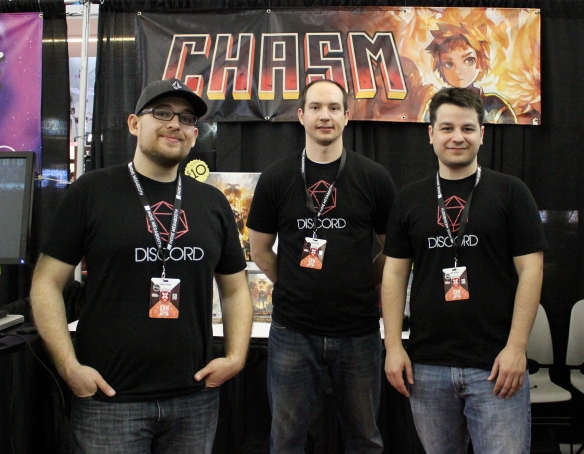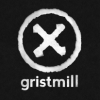 I recently had a great conversation with Paul from Gristmill Studios (XenoMiner, Devilsong). It started as me asking some advice about how to approach releasing Produce Wars on XBOX Live Indie Games (XBLIG), and ended up with him providing incredible insight into how Gristmill made the jump from rookie XBLIG developer to seasoned veteran.
I recently had a great conversation with Paul from Gristmill Studios (XenoMiner, Devilsong). It started as me asking some advice about how to approach releasing Produce Wars on XBOX Live Indie Games (XBLIG), and ended up with him providing incredible insight into how Gristmill made the jump from rookie XBLIG developer to seasoned veteran.
This stuff is good. I plan to apply lots of his advice to how we approach our first game release. I would encourage any fledgling developers who are on XBLIG to read it from start to finish. Even if you aren’t that new to indie development, you should read it.
Crizz: What were your initial expectations about releasing a game on XBLIG? Have those expectations been proven right or wrong now that you have been on the platform for a while – both with Devilsong and XenoMiner?
Paul: I think our expectations have changed and matured between Devilsong and XenoMiner. Devilsong being our first game, I think we had much higher hopes for it than reality warranted. Devilsong is a fun game in its own right, but definitely would have required at least another six months to a year of work to really shine.
 The channel in general I think throws people off. Most games could consider themselves a success if they sell more than a couple hundred on XBLIG – it really is a very small market. The games that rise to the top ten and stick there sell, many, many more of course, but that is not the norm.
The channel in general I think throws people off. Most games could consider themselves a success if they sell more than a couple hundred on XBLIG – it really is a very small market. The games that rise to the top ten and stick there sell, many, many more of course, but that is not the norm.
The best comparison I can make to XBLIG is mobile. The channels are very similar. The majority of sales decisions are made based on your box art and title, and outside coverage (such as reviews, previews, articles, blogs, interviews, etc.) have little effect on your sales. There are exceptions to this rule, but they are limited to major coverage, such as GameInformer, Kotaku and probably Penny Arcade.
Crizz: Devilsong is actually pretty awesome, but it seems like it fell on deaf ears (1447th all-time best-selling). XenoMiner is awesome too, but is already ranked in the low-400’s and rising fast in just four months. Why do you think Devilsong struggles to get a dollar out of people, even though it’s easily has the quality of a three to five dollar price tag?
Paul: Devilsong is a fun game, but we made it in a short cycle – about one month to feature complete and one month of bug fix. It sold about as well as could be expected for a multiplayer-only deathmatch experience. Someday we’ll have to revisit the idea, and really make the Wing Commander experience we were originally envisioning.
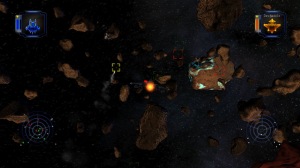
Crizz: How would you go back and change your marketing strategy for Devilsong upon release, knowing what you know now?
Paul: The primary mistake we made with Devilsong was releasing it at the three dollar price tag. This effectively doused our initial sales push in the first week, which ensured we would drop off any kind of best-selling list long before we could make changes. Back then you couldn’t change your price weekly, and it was three months before we could drop the price. That being said, I doubt it would have changed much in the long run.
Crizz: Hence the one dollar price tag on XenoMiner.
Paul: Thomas Steinke of DigitalDNA said it better than I can. You should read the two articles he wrote, and really think hard about his advice. His thoughts may not sit well with everyone, but there is little denying his rational and pragmatic approach to the questions.
How to make it on Xbox Live Indie Games by Thomas Steinke (Digital DNA) via Gamasutra
The Myths about XBOX Live Indie Game Development by Thomas Steinke (Digital DNA) via Gamasutra
In order to sell on XBLIG, you need access to the audience. That means you are either on the New Release list, you are on the Most Popular list, you are paying to advertise on the Dashboard, or your game is just cool enough that your first round of buyers (during the release list period) are telling their friends and convincing them to buy it. In other words: Release, Most Popular, Advertise or Viral. Advertising is probably out of the picture, at least at first. It’s unlikely you’ll recoup anything spent on advertising at any rate if you can’t also profit from the other three. During release, you’re building your core community and hoping to make your dent on the Most Popular list. After you fall off that list, you’re either on Most Popular, or your game is fairly Viral, or it’s gone.
 Most Popular seems to be driven primarily as a rolling five day top downloads list. In this respect, you can sell your game for $3, or you can sell about 3 times as many copies for $1. It’s eerie how often this is a direct ratio (you’ll sell three times as many at one third the price).
Most Popular seems to be driven primarily as a rolling five day top downloads list. In this respect, you can sell your game for $3, or you can sell about 3 times as many copies for $1. It’s eerie how often this is a direct ratio (you’ll sell three times as many at one third the price).
(Editor’s note: I looked up the fastest example I knew how to find, and Paul was pretty close)
So the question to ask yourself is: do I want to get the value I feel the game deserves at three to five dollars, or do I want to get the exposure to three to five times as many people, where you will probably get about the same revenue? The answer is obviously more people. More downloads means you will sit higher in the Most Popular list, by virtue of which you will make more sales. It also means that your core community, your first adopters, will be much larger. These are your fans, your evangelists, and your moral support. The more of them there are, the better your game, your next games, and ultimately your studio will do.
That’s why we’re priced at one dollar. It is feasible that with enough popularity and perhaps the addition of multiplayer we may be able to raise the price to three dollars without seeing a significant drop in sales (and we may try it), but I doubt we would attempt something like that before we are sitting somewhere in the top ten. Even then it would be risky. Why give up that position? That list could be the only advertising you have.
Even if you believe your game is worth more, you should very seriously consider releasing it at one dollar, if even just at first. Releasing at anything higher is close to suicidal from a list and sales perspective.
Crizz: Since you’ve now experienced a good selling game, and a game that flopped, what general advice would you give new developers (like us!) so that their game doesn’t completely disappear on XBLIG?
Paul: This is actually a hard question to answer, as to really answer it, we almost need to back up a step and ask a bigger question.
 First, understand that 90% of your marketing is the title of your game and the box art. Very little else effects your release sales, and there is quite a bit of advice written about this if you look in the XNA forums or Google around. Make sure your box art is top notch, and that it appeals to curiosity and imagination. It doesn’t necessarily need to be great art, it needs to be great marketing. The distinction is often better understood by graphic designers than by illustrators, cartoonists and other artists, as they deal with it all the time when creating work for advertising.
First, understand that 90% of your marketing is the title of your game and the box art. Very little else effects your release sales, and there is quite a bit of advice written about this if you look in the XNA forums or Google around. Make sure your box art is top notch, and that it appeals to curiosity and imagination. It doesn’t necessarily need to be great art, it needs to be great marketing. The distinction is often better understood by graphic designers than by illustrators, cartoonists and other artists, as they deal with it all the time when creating work for advertising.
The second incredibly important area is your trial mode. You’ll really want to make sure you have a smooth and very exciting trial. It shouldn’t necessarily be the beginning of the game either. It simply needs to capture the imagination of the player over about six minutes, and then easily guide and entice them to making the full purchase.
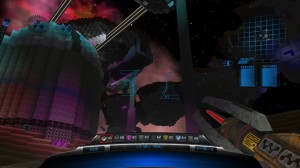 Never skimp on this part. Getting the audience to bother to download your game was the hard part, don’t waste that by throwing away 90% of them. They’re interested, they want to buy. Make sure they do. Most games seem to convert about five to eight percent of trials into sales. Successful games often sit around twenty percent.
Never skimp on this part. Getting the audience to bother to download your game was the hard part, don’t waste that by throwing away 90% of them. They’re interested, they want to buy. Make sure they do. Most games seem to convert about five to eight percent of trials into sales. Successful games often sit around twenty percent.
 This is actually a place where I feel XenoMiner falls short, because our trial is very tutorial heavy and we have room to improve. We do have over a 50% conversion rate though, so we’re still doing well – but I’m sure we could do much better. Never settle for good enough on your conversion rate.
This is actually a place where I feel XenoMiner falls short, because our trial is very tutorial heavy and we have room to improve. We do have over a 50% conversion rate though, so we’re still doing well – but I’m sure we could do much better. Never settle for good enough on your conversion rate.
That is my best advice for XBLIG. Notice I didn’t mention reviews at all. That’s because they generally won’t make a difference. At least, they didn’t in our experience. Outside of the really high traffic sites, review sites for Indie games won’t be noticeable on your sales charts. This doesn’t mean they’re not important, it just means they’re not important for direct sales.
Crizz: Now that you mention it, how many reviewers or press did you contact at release for both games? I personally have a speadsheet with about 50 potential contacts. Is that overkill or not enough?
Paul: Because we were in the Indie Uprising, we actually didn’t have to contact any reviewers, they all contacted us. I think in all we have somewhere around ten or so reviews out there, along with a few interviews, developer journals and the like.
Contacting around 50 reviewers sounds like the right amount. I once put together a list myself and it was around 50 long as well, though the benefit towards sales is dubious at best. I wouldn’t send review codes in the initial email, I’d wait till I had a warm body interested enough to ask for one. This way you don’t waste your free codes on cold calls. If the bigger strategy is more than just sales of this game, then the more reviews you have out there the better.
If you’re not interested in pursuing publishers, investors, or in some way trying to go through some other sort of traditional business route, I’d agree with Thomas that it’s largely a waste of energy. There are exceptions, as I’ve noted. Just keep in mind that answering a series of questions (such as this!) can easily take three or four hours, assuming you’re giving well thought out responses. That’s three or four hours of new features, bug fixes, or other work you could be doing on your game or next game. If you have lots of free time, or find value outside of sales in having press coverage, then by all means pursue it, and do it aggressively.
At Gristmill, we’re very interested in interfacing with the community, and in being a part of the larger conversation of game development and design, especially amongst other indie developers. This is one of the main reasons we submit so many interview responses, not because we expect to see any extra sales, but because we want to be engaged.
 Crizz: Let’s talk about the peer review process.
Crizz: Let’s talk about the peer review process.
Paul: Peer Review, especially your first one, is like sliding to Hell on a chute made of razors and lubricated only by your own blood and tears.
Ok, perhaps that’s a bit of hyperbole.
But the truth is, if you’re anything like me you’ll end up refreshing one to three different screens every two to five minutes for several days. If you have to work during that time, make sure you’re in a position where you can slide without getting work done. The only thing worse is your release week, in which you’ll be glued to a sales stat report even though it only updates once a day.
Peer Review is:
- Never done as fast as you wish it was.
- Often the grueling and gut-wrenching decision to pull the game when it’s at 90%.
- Not represented accurately by progress percentages (the first two get you over 50%!)
- Rarely, (ever?) passed the first time you try.
- A good chance to beat yourself up for missing something terribly stupid.
- And finally a test of will, as it isn’t uncommon to fail out three or four times before you make it through, even as a seasoned veteran.
My advice for Peer Review is to have each member of your team walk through the Evil Checklist at least twice, and separately. If anyone comes up with a question, a bug, a crash, or a fail on any of the points it has to be addressed specifically and with respect. It’s incredible how often developers are tempted to disrespect someone reporting a bug, attempting to dismiss the bug out of hand. It has to do with ego, and if egos get involved, assign a different team member to investigate. Once the bug is fixed, the process should start over. Everyone tests it twice again.
 Remember that you only get one Release. Don’t do it for any reason except your own. If there’s a huge game release that weekend, such as Call of Duty, Borderlands, or Fallout, hold off. Only release on late Thursday or on Friday unless you have an extremely good reason not to. Your highest sales will be on Saturday and Sunday, and lowest on Monday or Tuesday. Releasing on a Thursday/Friday ensures you’ll spend the most time you can of your New Release time on high sale days.
Remember that you only get one Release. Don’t do it for any reason except your own. If there’s a huge game release that weekend, such as Call of Duty, Borderlands, or Fallout, hold off. Only release on late Thursday or on Friday unless you have an extremely good reason not to. Your highest sales will be on Saturday and Sunday, and lowest on Monday or Tuesday. Releasing on a Thursday/Friday ensures you’ll spend the most time you can of your New Release time on high sale days.
Crizz: Given the relative success of Minecraft-genre games on XBLIG, did you do anything unique to try to reach out to this audience for XenoMiner?
Paul: Knowing that there is a large, hungry market for voxel sandbox games, we wanted to make sure we could reach that audience. Knowing that there are few truly effective advertising tools for XBLIG (box art and game title), we chose the name XenoMiner specifically to call out to people who otherwise might not realize what it was if named differently. Though XenoMiner was not anywhere near the coolest name we could give it, it did fulfill the most important criteria: it loudly proclaimed to anyone reading the name that this was a voxel game (hence the Miner), it was a unique sounding name that would be easily recognized by anyone looking for it.
This is something we didn’t do with Devilsong. I personally love that title, and it speaks to a concept found in the lore of the game (which, unfortunately, was never actually explored). I wonder how sales might have been if we had named it WingLeader: Deathmatch, or something of the like. Again, these names aren’t exactly great, but they tell the marketing story. “Avatar Laser Wars” tells you exactly what the game is, as does “Avatar Paintball” or “MurderMiners”.
Crizz: Do you have any samples of your press release I could see?
We actually don’t have one, and haven’t ever sent one out.
Crizz: Seriously? Then how did you get that feature on Game Informer? Was that something where you contacted them, or they contacted you?
Paul: The GameInformer feature was pretty awesome. We were somewhere on their front page for an entire weekend. They actually contacted us, we didn’t seek that one out. This is the only coverage we had that we saw any noticeable sales impact. That weekend was actually a better sales weekend than our release weekend. This type of coverage is the exception to the rule that I talked about earlier.
Crizz: You said something earlier about asking yourself a bigger question.
Paul: Outside of XBLIG, I’d advise looking at the bigger picture. Gristmill has never seen XBLIG as the endgame, though it is our home. What do you want to do with your studio, where do you want it to be in five years? When we started Gristmill, we set out with a five year plan, and the most important part of the plan was that we would publish.
Publish, publish, publish.
 What differentiates your studio from literally thousands of others is that you are releasing a game, because most simply don’t. The payoff on a channel like XLBIG is rarely revenue. What it really shows is proof that you can execute, that you can finish that horrible last 10% of the process, and that you can be entrusted with taking an idea all the way from inception to the finish line.
What differentiates your studio from literally thousands of others is that you are releasing a game, because most simply don’t. The payoff on a channel like XLBIG is rarely revenue. What it really shows is proof that you can execute, that you can finish that horrible last 10% of the process, and that you can be entrusted with taking an idea all the way from inception to the finish line.
If you are considering taking your studio professional at some point, and not just a garage game or after-work affair, then soon you’ll be talking to publishers, investors, or even just a significant other in an attempt to convince them you can make it as a game developer. Publishing is how you prove that. This is the real value of the XBLIG scene in my mind. It’s a great platform with easy access that will let you showcase your talents, diligence, and professionalism on a small scale before you try your hand at bigger games and more risky enterprises.
That being said, there is real money to be made on XBLIG if you’re willing to cater towards the market. Again, Thomas touches on those in his articles on Gamasutra. If you want to sell games, you have to make a game people want to buy. Making an artistic statement, doing something new or innovative, coming up with an entirely new game idea or genre – those can be rewarding endeavors, but are not necessarily monetarily rewarding. Know what reward you are seeking, and don’t expect to hit something you weren’t aiming for.
Follow me on Twitter to catch more developer tidbits like interviews, articles, and commentary. Help me, help you!
Oh and please like our Facebook page!

